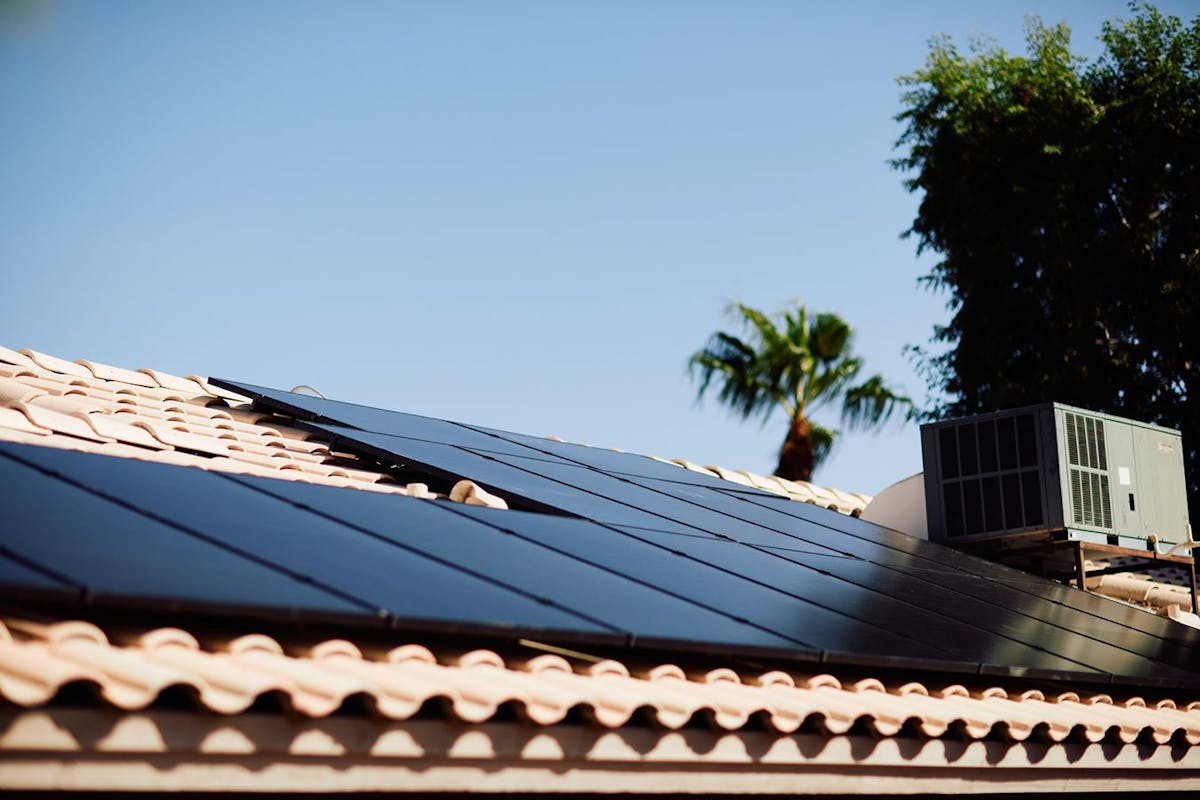Sun-Tracking Solar Panels Pros and Cons: Are They Worth It?
Last edited

Author
Andrew Blok
Electrification and Solar Writer and Editor

Editor
Andrew Giermak
Solar and Electrification Writer and Editor
Solar panels generate the most electricity when they're pointing directly at the sun. It stands to reason that moving them throughout the day to face the sun directly for longer would generate more electricity.
That's true and it's why sun-tracking solar panels exist. However, that increase in production doesn't always offset the additional cost, especially for home solar panel installations. Here's what you need to know about tracking systems for solar panels and where they make sense.
See how much you can save by going solar with Palmetto
What Are Sun-Tracking Solar Panels?
Sun-tracking solar panels (aka solar trackers, or rotating solar panels) combine solar equipment and motorized movement. Sun-tracking systems generate clean, renewable power and are used for thermal and electric solar power.
The angle of a solar panel to the sun affects how much electricity a panel generates. The more direct sunlight it gets, the more electricity it produces. In the northern hemisphere, that means south-facing panels generate the most, since that’s where they’ll directly face the sun for the most hours each day.
The tracking element is installed on the mounting and racking system, allowing the panels to move and rotate to face the sun at a perfect, perpendicular angle throughout the day.
How Do Solar Tracking Systems Work?
No matter how basic or advanced a solar tracking system may be, its goal is to harness as much direct sunlight as possible throughout the day and year. Sunlight hitting panels at an exact perpendicular angle provides the maximum power potential, so solar trackers help point panels directly toward the sun if possible.
Following the sun’s path, tracking solar panels move through one complete rotation daily, either mounted on a single-axis or dual-axis tracker.
Using a single-axis tracker, solar panels operate like a seesaw, tilting over one point of contact and facing east to west from sunrise to sunset. With a dual-axis tracker, the panels can tilt both east to west and north to south for a full range of motion to optimize direct sunlight at every moment throughout the year.
Depending on the installation’s hardware and software, solar tracking systems may run autonomously or allow users to control the position of their panels.
Tracking vs Non-Tracking Solar Panels
The pros and cons of tracking solar panels compared to fixed solar panels are relatively straightforward.
In most cases, non-tracking systems will make more financial and logical sense for average homeowners. If you have a roof that is fully exposed to the sun that receives enough peak sun hours, often a non-tracking solar panel system will still be able to produce enough power to cover your property’s annual electricity use. Since many utilities limit the capacity of solar panel installations eligible for net metering, designing a system that produces much more electricity than you’ve historically used isn’t necessary.
Most solar installations go on roofs and are stationary because it’s the most cost-effective way to meet a home’s energy needs. Reputable solar installers take into account the space, angle, and direction of your roof to design a system that meets your needs.
However, the increased costs of tracking systems are often worth the increased energy generation potential for utility-scale solar farms and large commercial facilities.
See how much you can save by going solar with Palmetto
Advantages of Solar Trackers
Solar panels work most efficiently in direct sunlight, so a sun-tracking system's primary benefit is maintaining optimal positioning for maximum power generation. Using today’s advanced tracking systems that follow the sun’s path throughout the year in accordance with the property’s location, rotating solar panels allow system owners to squeeze every last drop out of each day’s sunlight.
According to a study published in 2022, tracking solar panels can produce between 10% and 60% more energy than a fixed system. While this range depends on property location, time of day, and whether the trackers are single- or dual-axis systems, most sources estimate that sun-tracking solar panels output between 30% and 40% more power each year than a fixed installation.
Disadvantages of Solar Trackers
Despite the extra power potential, solar trackers have a few disadvantages that prevent them from being a good choice for residential solar installations.
Upfront costs
While solar panel tracking system prices are variable and usually bundled with other project expenses, the extra equipment requirements will always raise the costs of a solar installation. This can lengthen a project’s solar payback period.
In addition to the motors and rotating components, tracking systems also need more mounting materials than an average rooftop installation, as the panels must be raised above the ground (or a flat roof) to allow for a full rotation.
The additional upfront investment in sun-tracking solar panels can add up very quickly. For homeowners, these expenses typically exceed the financial benefits of having more efficient solar power generation onsite.
Property requirements
Even if your property has space to host a sun-tracking solar system, the location of the installation should receive direct sunlight at every hour of the day to make the investment worth it.
On properties with buildings or trees obstructing the sun, finding a spot for rotating solar panels can be challenging. Elevating electricity-generating solar panels above a tilted roof is often against local building and electrical codes, so sun-tracking systems are almost always a ground-mounted system or installed on a flat surface.
More moving parts
One of the great things about solar energy is its passive operation. However, sun-tracking systems complicate that. Sun-tracking solar panels may need more maintenance than their stationary counterparts, thanks to their additional moving parts.
| Pros | Cons |
|---|---|
| Increased electricity production | Higher cost |
| Greater property requirements | |
| More moving parts and maintenance potential |
Verdict: Is Solar Tracking Worth It?
In the end, sun-tracking solar panels generate more renewable energy but aren’t a good fit for most home solar installations.
As many homes have enough rooftop or property space for stationary panels to generate enough electricity for less money, sun-tracking systems are typically reserved for large-scale installations.
Today, the best uses for sun-tracking solar panel systems include community solar farms, commercial solar projects, and utility power production.
To learn more about your residential solar options, calculate your savings or see how you could save with home energy upgrades by downloading the free Palmetto app.
See what solar can do for you:
Frequently Asked Questions
How much maintenance do solar panels usually need?
Solar panels can be low maintenance, requiring just occasional cleaning. Issues can arise though, and many solar systems are sold or leased with protection packages that offer system monitoring and maintenance. Learn more about Palmetto’s coverage offering, Palmetto Protect.
How much more electricity do sun-tracking solar panels generate?
Sun-tracking solar panels can generate up to 60% more energy than fixed systems, depending on location. A more common estimate is 30-40%. For residential systems, the additional power generally isn’t worth the additional upfront expenses.


